They say death stalks in Mexico,
And that people there kill each other every day;
As long as there is one Mexican alive
Our flag will be waving in his hand.Anonymous
Communities have been looking to their founders, whether real or imagined, for inspiration and models for behavior and attitude, as long as there have been founders to which descendants might look. For example, the Roman republic looked to the hardy twins Romulus and Remus, nursed by a wolf, for their divine strength and to legitimize their regional hegemony. However, they also saw in the legend of the twins’ fratricide the roots of later civic conflict (Miles 103). Likewise, the virtues attributed to the USA’s founding ‘fathers’ have inspired bravery in defense of democracy, but also a later “distrust of the state, egalitarianism, and populism” (Lipset 2). This pattern of persistence or resurgence of characteristics and/or values of the founders, years after a foundational event, applied to Mexico as well. The revolutionary leaders Villa and Zapata, whose memory is preserved in poems as well as artwork such as is displayed in Attachment 1, serve as a similar inspiration and role model (Joseph and Henderson 373-374) (Mariscal). However, the weaknesses of these leaders, and of the revolution that they led, can be seen to contribute as well to the image of Mexico both internally and externally. This, in a sense, serves as a self-fulfilling prophecy of violence, ignorance, and poor governance of the Mexican nation. This is reflected in images in the creative products and in expressions of public opinion from both sides of the border.
Some sources for these impressions can be found in the observations of contemporaries of the Revolution. Two well-remembered players were Emiliano Zapata and Pancho Villa. Both were unquestionably committed to their aim of changing the status quo. Neither was, however, apparently fitted, by training or temperament, for long term leadership of a reformed nation (London). There is a precedent on the North American continent for distinguishing between the role of ‘general,’ or leader of soldiers, and the role of ‘president,’ or leader of all the people, for the formation and maintenance of a country. As an example, George Washington was pressed to serve as president, but he responded, “it is my great and sole desire to live and die, in peace and retirement on my own farm.” (Convoy). Washington was educated and had helped formulate the nation’s foundational documents. The leaders of the Mexican Revolution, by contrast, were just barely literate and had limited exposure to training for statesmanship (Convoy). Their discomfort with the idea of the ruling is borne out by a photo of them sharing a throne, surrounded by their soldiers, in Attachment 2. Thus, the resulting mythos surrounding them focuses more on their violent exploits than on any statesmanlike attributes, and this seems to have influenced the subsequent impressions of Mexico at home and abroad.
Ilene V. O’Malley has been quoted as asserting that these men became such powerful symbols of Mexican culture because what she characterizes as propaganda about them was revolutionary, nationalistic, obfuscating of actual history, denigrating of politics, and promoting of Christian images and values (Acevedo-Muñoz 21). The sources of at least some of the myths and legends about these leaders can be found in the attestations of their contemporaries. They shared some similarities and differences that may help to explain their impact on Mexican images in later years.
Pancho Villa, who appears to have been mestizo 1 began life as a sharecropper in Northern Mexico, and became an outlaw after shooting a man who attempted to violate his sister’s honor. He developed skills in leading other outlaws. In his thirties, in 1910, he became the leader of a group of 28 rebels responding to injustices perpetrated on the poor. Despite their initially small numbers, they achieved guerilla successes in pursuit of land reforms. His División del Norte grew to 500 by 1913. He acquired a fearsome reputation for marksmanship and horsemanship, and the intense loyalty of his men, as well as a reputation for mystery (Reed 366) 2. His ‘Villistas”, never more than a few thousand in number, managed to overcome both Mexican and US forces, including motorized vehicles and airplanes. His life inspired the descriptors “Robin Hood, bandit, killer, [and] womanizer.” He was quick to kill if he sensed betrayal. He also distributed some booty to the poor (Nicolopulos). In later life, he had both a wife and a mistress, although he challenged any accusation of violating other women by asking, “have you ever met a husband, father, or brother of any woman that I have violated?…Or even a witness?” (Reed 369). Reed points out that “He was absolutely ignorant of the troubles and confusions and readjustments of modern civilizations,” having only learned how to read in his thirties (Reed 369). Thus, he appears as a highly effective guerilla leader of men, with a lifetime reputation for ruthlessness and supposed charity 3. He was wise enough to acknowledge the limitations of his education and lack of exposure to issues beyond his focus on land reform, and avoid the presidency. He did not, however, avoid assassination. His image is inextricably tied to his firearms, as indicated by the puppet pictured in Attachment 3 (Pancho Villa Vintage Puppet Primitively Handmade)
Another leader of the Revolution, Emiliano Zapata 4, whose photographs also suggest mestizo heritage, was a farmer’s son. His village in the southern state of Morelos elected him leader when he was thirty, at which point he also began reading and acquiring education in land rights, and anarchist principles (Watkins). He, too, was highly effective, and his capture of Cuidad de Juarez was instrumental in forcing Porfirio Diaz’ resignation and propelled the rebellion. Guzman describes him as utterly lacking in exposure to the world beyond his commitment to land reform and his talent for leading men (Guzman 352). Hs exposure to socialist ideas led to his initiating radical plans for land redistribution, which were not fully realized.(London). However, the Revolution did increase the percentage of land held in private ownership over the decades, as displayed in Attachment 4 (Bertin). Some of his Army of Southern Liberation (pictured in Attachment 5) was probably as clueless about the Revolution’s goals, and as poorly trained as the protagonists of “Pedro Martinez” by Oscar Lewis, and “Juan the Chamula”, by Ricardo Pozas (Lewis) (Pozas 391). He was not interested in whatever glory might accrue to him as president, but instead felt out of place in the palace (Guzman 351-356). At the end of the Revolution he was lured into an ambush through gifts of the horses he so loved, and assassinated (Watkins). His image is equally iconic in Mexican culture, as indicated by the image in Attachment 6, showing an eerie resemblance to the Shroud of Turin (Zapata Punk Revolution).
The impression of Mexico as less prone to lawful resolution of conflict goes back before the Revolution. New England author and sailor, Charles Henry Dana, recorded his impressions, in Two Years Before the Mast, of Mexicans in California back in the 1800s. He described them as “idle, thriftless people” (Dana 94) 5. He also noted their practice of resolving issues of womanizing with violence (Dana 214-215). He also noted the venal, corrupt and self-serving civil authorities (Dana 210) 6. Of course, these very abuses and injuries helped to propel people like Villa and Zapata to take up arms.
The Revolution, itself, inspired ridicule, as for example from artist Jose Clement Orozco, who is quoted by Herrera as describing it as “the gayest and most diverting of carnivals…” (Herrera). In his autobiography, he observes that “The world was torn apart around us. …war without quarter, struggle for power and wealth. Factions and subfactions were past counting, the thirst for vengeance insatiable… Insolent leaders, inflamed with alcohol, taking whatever they wanted at pistol point” (Herrera). Such mayhem is attested to as well by American businessman and diplomat, William O. Jenkins who termed Revolutionary Mexico a “hell” (Jenkins 357). In 1915, Mariano Azuela recorded a time of terrifying violence in The Underdogs, against land-owners, and, sadly, against women(Azuela passim) (Fernández). Chillingly, for the most part, the perpetrators often barely understood the desired reforms (Azuela passim). Worse still, even idealistic adherents to the causes of land reform and the principles of “The Socialist ABC’s”, can end up like Azuela’s well-educated but naïve journalist Luis Cervantes, by betraying the pure goals of the Revolution (Gerdes 562) (The Socialist ABCs 411-417) (National Endowment for the Humanities).
The atmosphere of violence perceived by artists did not dissipate as the years passed. In the 1950s, Bunuel’s movie Los Olvidados portrays a Mexico of near constant risk of violence and lawlessness. (Inda, Inclán and Mejia). Here again, vengeance, the human behavior perhaps most subject to moderation by civil society, is the only effective law, since the prison cannot even hold the truly, criminally sociopathic character – Jtaibo (Inda, Inclán and Mejia). Author Juan Rulfos also conveys the sense of disorganized justice, or lack thereof. In “The Man”, Rulfos’s final narrator finds himself at risk for being incriminated, despite having done the charitable thing of succoring a starving man, and further, of actually cooperating with the constabulary, because there is such a lack of civil order and consistency in law enforcement. (Rulfos 25-26). In “Tell Them Not to Kill Me”, Rulfos also portrays a character who takes justice into his own hands because he sees no justice elsewhere (Rulfos, Tell Them Not To Kill Me 60-66).
Modern-day Mexicans continue to suffer from a sense of threat of violence and personal insecurity that causes even the wealthy to build fortress-style homes, such as the gate community occupied by the powerful family depicted in “A Capital Girl”. The godfather in Fuentes’s story laments over the heavy gates on his home, saying “What wouldn’t I give to leave the doors wide open the way we used to up here in the north. But now even the gringos need armed guards and police dogs.” (Fuentes 10).
This attitude on the part of modern Mexicans about their own nation is, sadly, borne out by repeated news of violent incidents (Rama and Diaz). It is also reflected in the intemperate utterances of politicians north of the border. No less a figure than presidential candidate Donald Trump describes Mexicans as “rapists”, who, when they immigrate north are “bringing drugs and crime” (Estevez).
The remembered mythic characteristics of the leaders of the Revolution, and of the Revolution itself, include a tendency to violence, often without little apparent reason or justification. This routine use of violence appears to persist, as evidenced by continuing disturbing news stories. This is reflected as a theme in the arts and even in political discourse, from the time of the Revolution to the present.
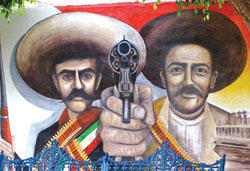

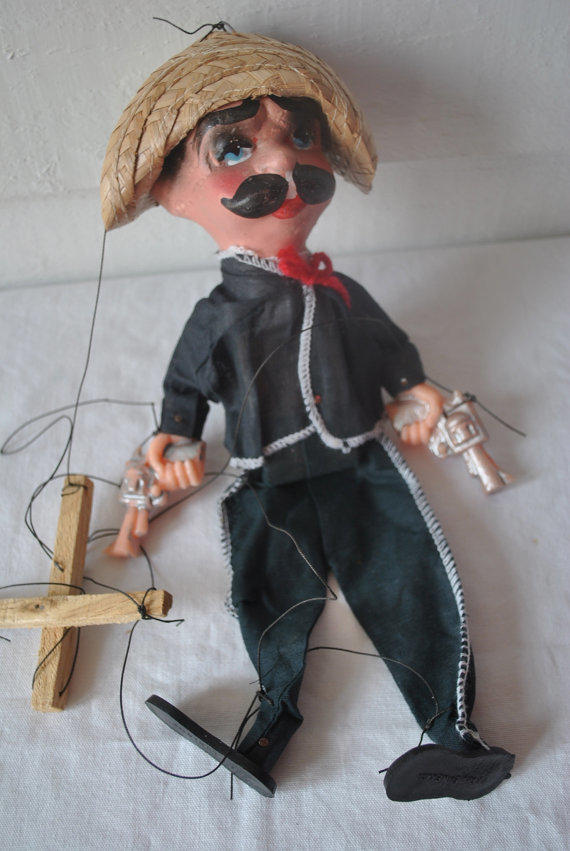
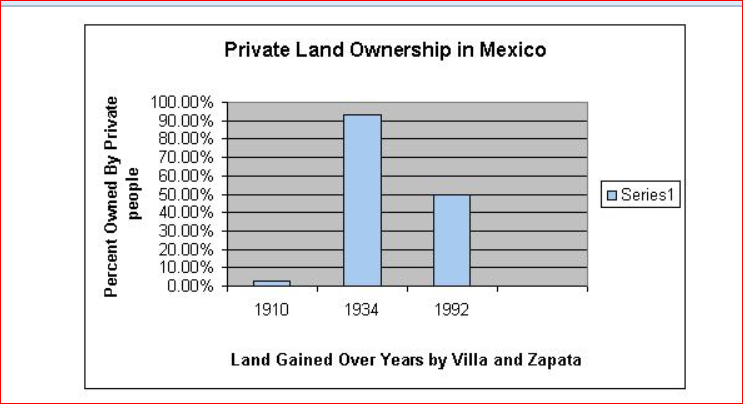
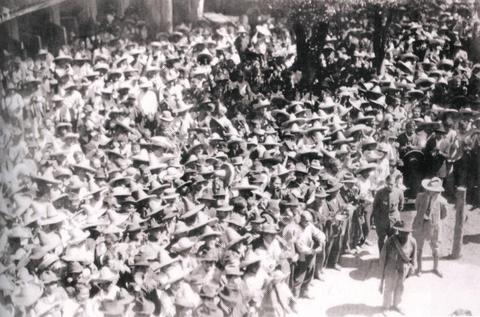
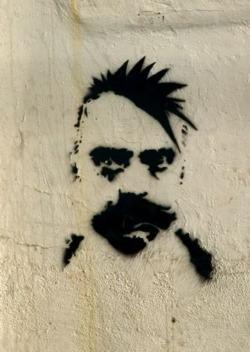
Works Cited
Acevedo-Muñoz, Ernesto R. Buñuel and Mexico: The Crisis of National Cinema. University of California Press, 2003. Web.
“La Punitiva.” Anonymous. The Mexico Reader: History, Culture and Politics. Ed. Gilbert M. Joseph and Timothy J. Henderson. Durham: Duke University Press, 2009. 373-374.
Azuela, Mariano. The Underdogs. 2008. Web.
Bertin. “Freedom Hero: Pancho Villa.” 2015. My Hero. Web.
Convoy, Sarah Booth. “First President’s Election was the Last Thing He Wanted.” 2015. The Papers of George Washington. University of Virginia. Web.
Dana, Charles Henry. Two Years Before the Mast: A Personal Narrative of LIfe at Sea. 1840. Web.
Estevez, Dolia. “Debunking Donald Trump’s Five Extreme Statements About Immigrants And Mexico.” 2015. Forbes. Web.
Fernández, Delia. “From Soldadera to Adelita: The Depiction of Women in the Mexican Revolution.” McNair Scholars Journal 16.6 (2009): 53-62. Web.
Fuentes, Carlos. The Crystal Frontier. Trans. Alfred Mac Adam. New York: Harcourt Brace, 1996. Web.
Gerdes, Dick. “Point of View in Los de Abajo.” Hispania 64.4 (1981): 557-563. Web.
Guzman, Martin Luiz. “Zapatistas in the Palace.” The Mexico Reader: History, Culture, Politics. The Mexico Reader. Ed. Gilbert Joseph and Timothy Henderson. Durham: Duke University Press, 2002. 351-356. 2015. Web.
Herrera, Haydn. “Jose Clemente Orozco and Diego Rivera – The Murals.” 2015. Mexconnect. Web.
Jenkins, William O. “Mexico has been turned into a hell.” The Mexico Reader: History, Culture, Politics. Ed. Gilbert Joseph and Timothy Henderson. Durham: Duke University Press, 2002. 357-363. Web.
Lewis, Oscar. “Pedro Martinez.” The Mexico Reader: History, Culture, Politics. Ed. Gilbert Joseph and Timothy Henderson. Durham: Duke University Pres, 2002. 375-386. Web.
Lipset, Martin Seymour. Continental Divide: The Values and Institutions of the United States and Canada. London: Routledge, 1991. Web.
London, Eric. “One hundred years since Zapata and Villa took Mexico City—Part 3.” 2014. World Socialist Web Site.
Los Olvidados. Dir. Luis Bunuel. Perf. Estela Inda, et al. Prod. Oscar Dancigers. DailyMotion, 1950. Film.
Mariscal, Bruno. “Two Men Who Forever Changed Mexico.” 2015. Chapala.com. Ed. Herbert W. Piekow. Web. 18 November 2015. .
“Mexican Revolution: Peasant Leaders–Emiliano Zapata and Francisco (Pancho) Villa.” 2015. Children in History. Web.
Miles, Gary B. Livy:Reconstructing Early Rome. Cornell University Press, 1991.
National Endowment for the Humanities. “Mexican Revolution: November 20, 1910.” 2015. Edsitement. Web.
Nicolopulos, Jaime. “Pancho Villa: Legends Before the Revolution.” 2015. University of Texas. Web.
“Pancho Villa Vintage Puppet Primitively Handmade.” 2015. HarpersFerryGypsyMkt. Etsy. Web.
Piekow, Herbert. “Two Men Who Forever Changed Mexico.” 2015. Chapala.com. Web.
Pozas, Ricardo. “Juan the Chamula.” The Mexico Reader: History, Culture, Politics. Ed. Gilbert Joseph and Timothy Henderson. Durham: Duke University Press, 2002. 387-397. Web.
Rama, Anahi and Lizbeth Diaz. “Mexican probe into possible massacre of 43 students deeply flawed.” 2015. Reuters. Web.
Reed, John. “Pancho Villa.” The Mexico Reader: History, Culture, Politics. Ed. Gilbert Joseph and Timothy Henderson. Durham: Duke University Press, 2002. 364. Web.
Rulfos, Juan. “Tell Them Not To Kill Me.” Rulfos, whats his name. The Plain in Flames. Trans. Ilan Stavans and Harold Augenbram. Austin: University of Texas Press, 2002. 60-66. Print.
Rulfos, Juan. “The Man.” The Plains in Flames. Trans. Ilan Stavans and Harold Augenbram. Austin: University of Texas Press, 2012. 18-26. Web.
“The Socialist ABCs.” The Mexico Reader: History, Culture, Politics. Ed. Gilbert Joseph and Timothy Henderson. Durham: Duke University Press, 2002. 411-417. Web.
Watkins, Thayer. “Emiliano Zapata.” 2015. San Jose State University. Web.
“Zapata Punk Revolution.” 2015. Erratically Chasing Erato. Web.
Footnotes
- Based on his photographs, he appears to have had mixed Spanish and indigenous heritage.
- He shared his men’s simple food and living conditions but was never seen sleeping. Instead, he slipped off by himself at night.
- Villa was also reputed to be addicted to marijuana, a hard drinker, and married several dozen times (Piekow).
- He was sometimes referred to as Eufemio Zapata.
- He observed that they “can make nothing for themselves. The country abounds in grapes, yet they buy bad wines made in Boston and brought round by us, at an immense price, and retail it among themselves” (Dana 94).
- He noted that the locals were “preyed upon by the harpies of the civil power, who are sent there in the capacity of administradores, to settle up the concerns; and who usually end, in a few years, by making themselves fortunes, and leaving their stewardships worse than they found them “ (Dana 210).